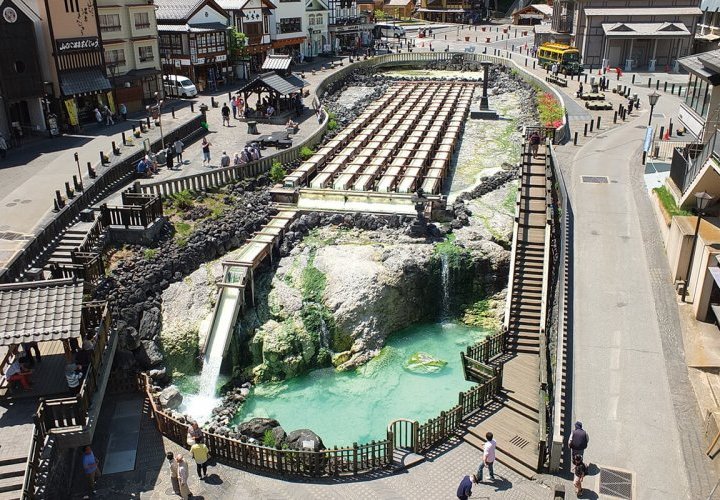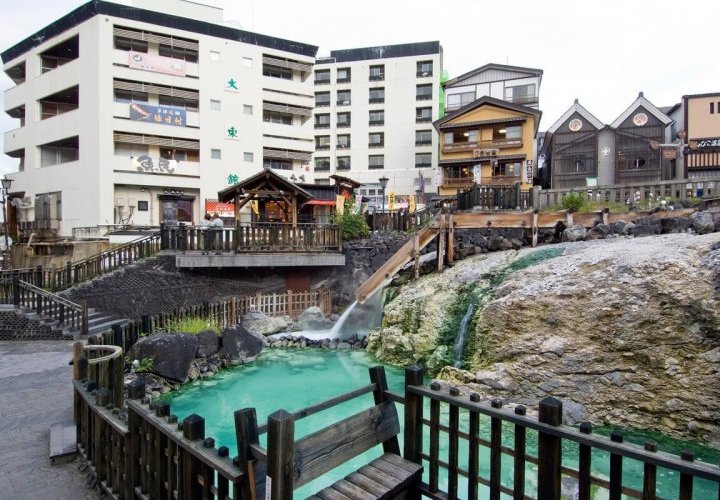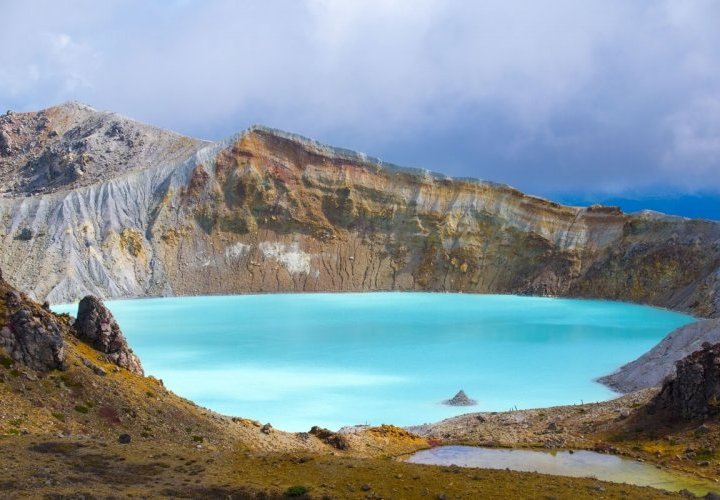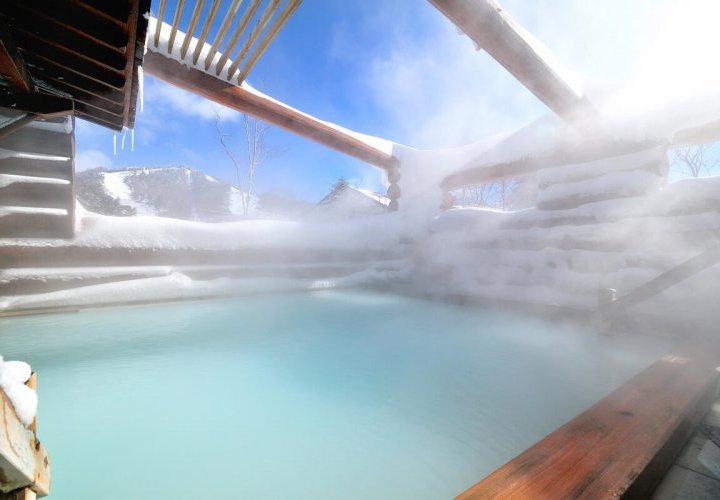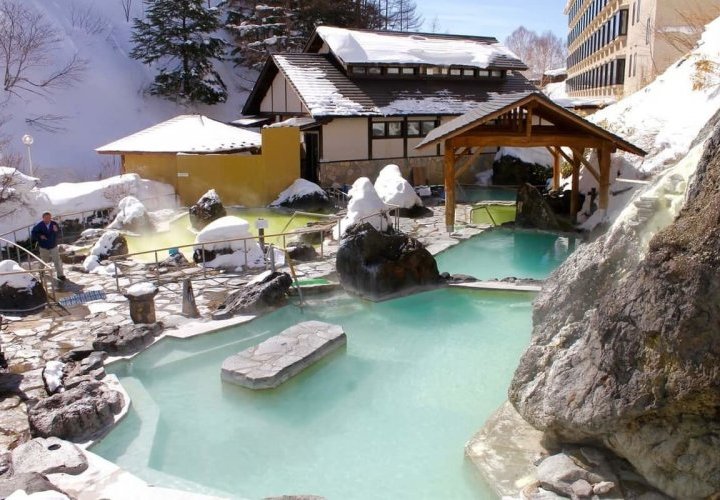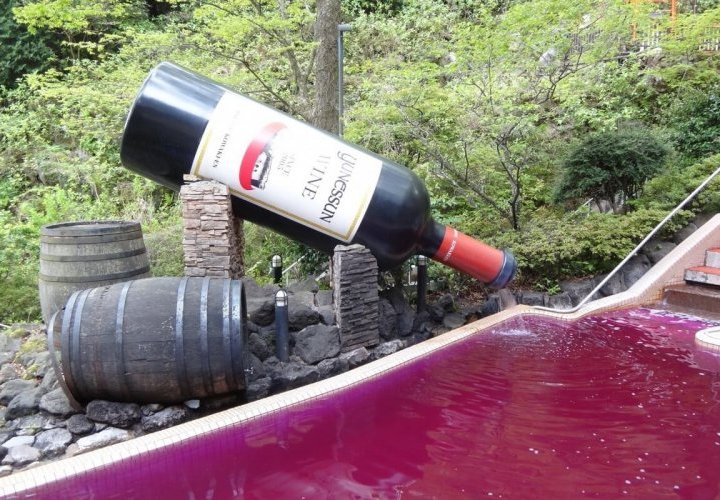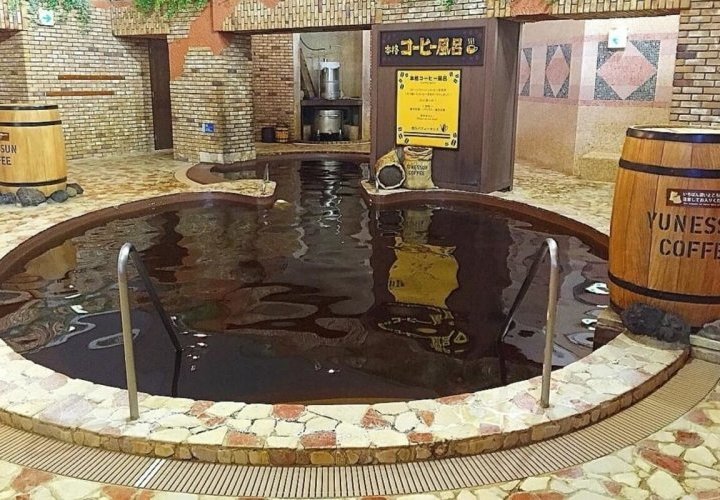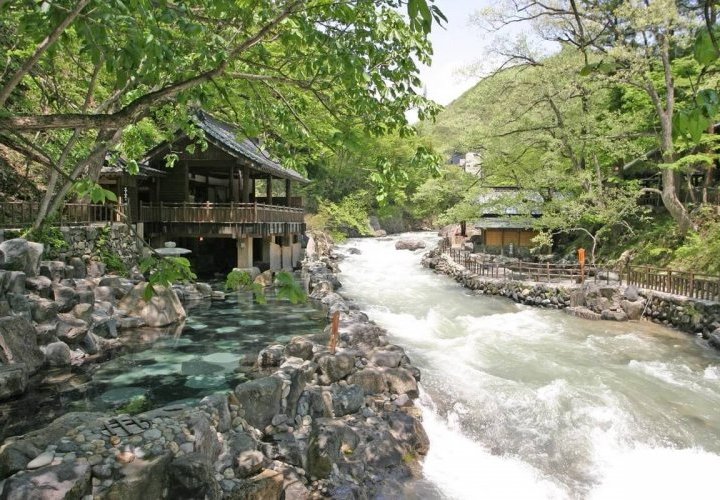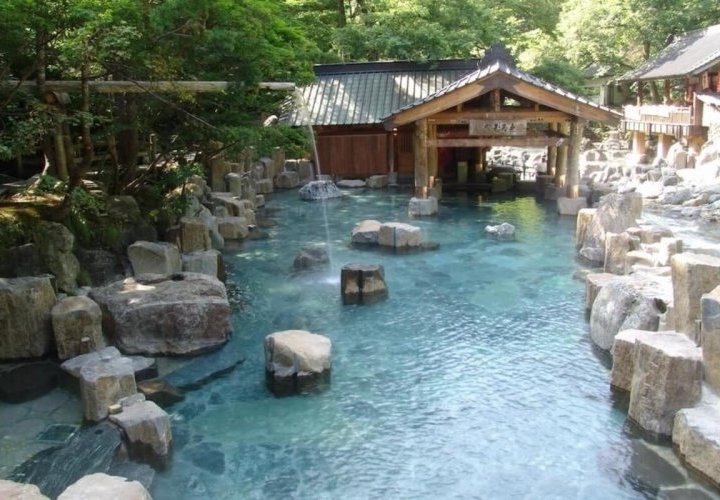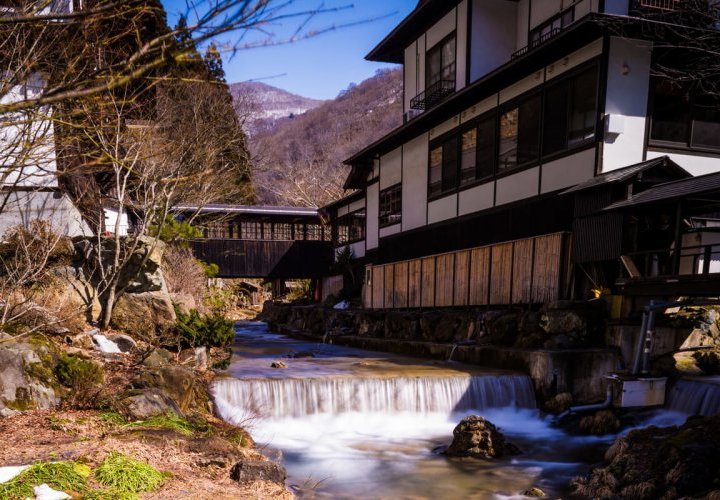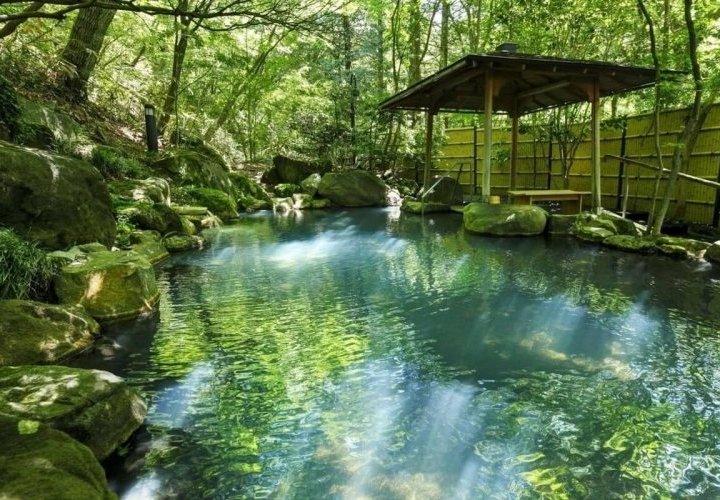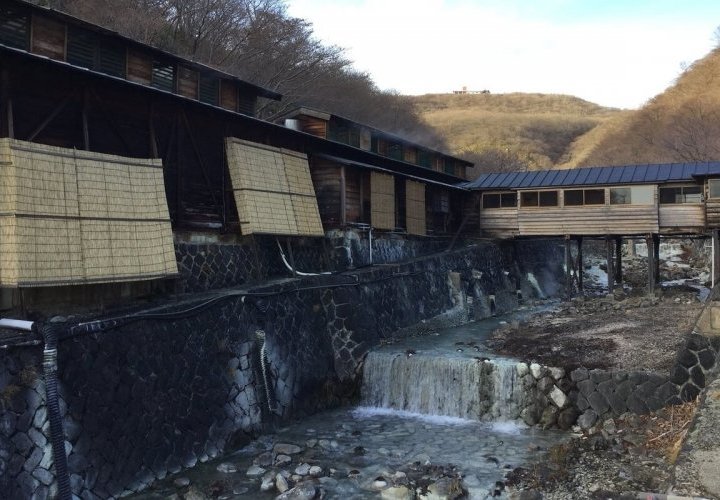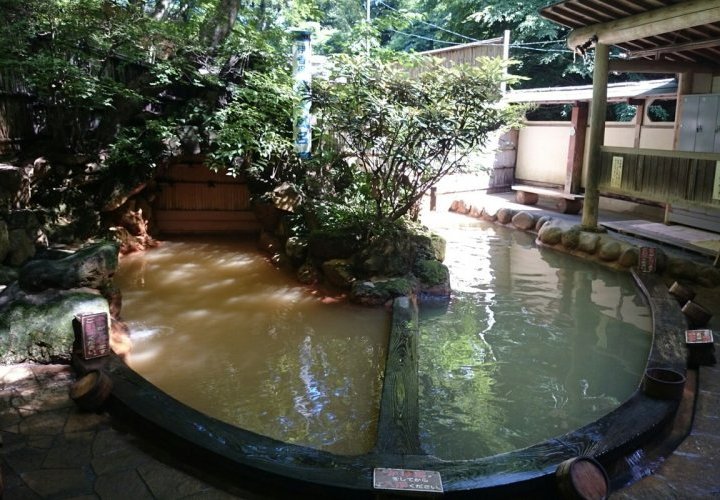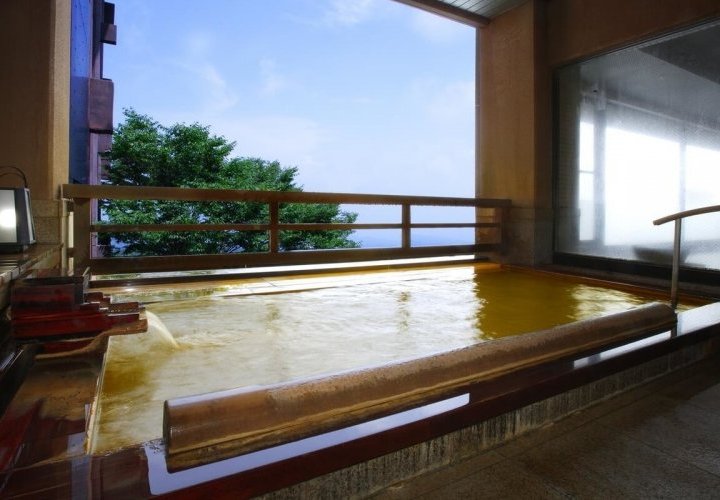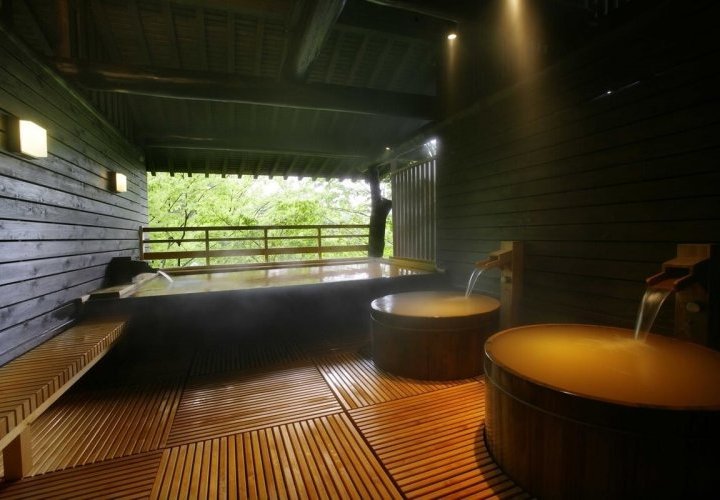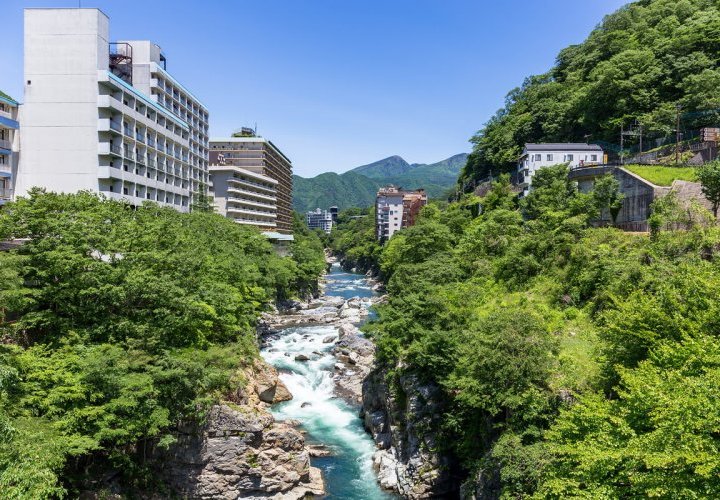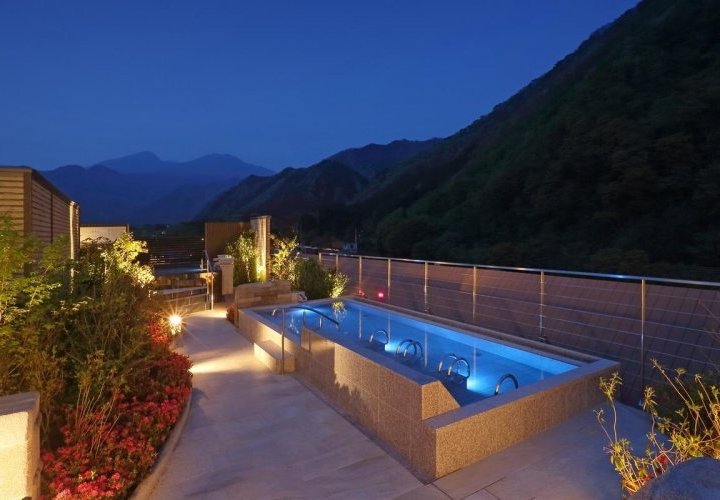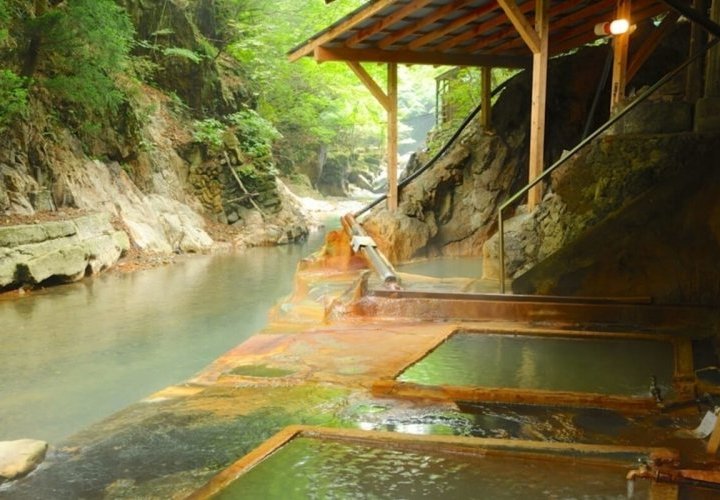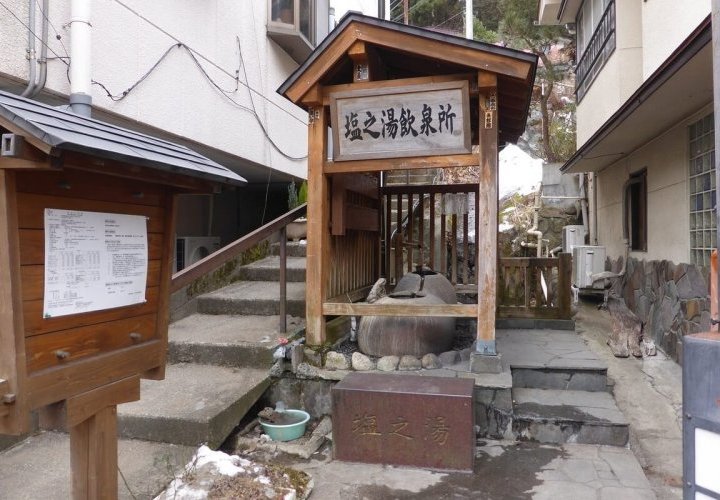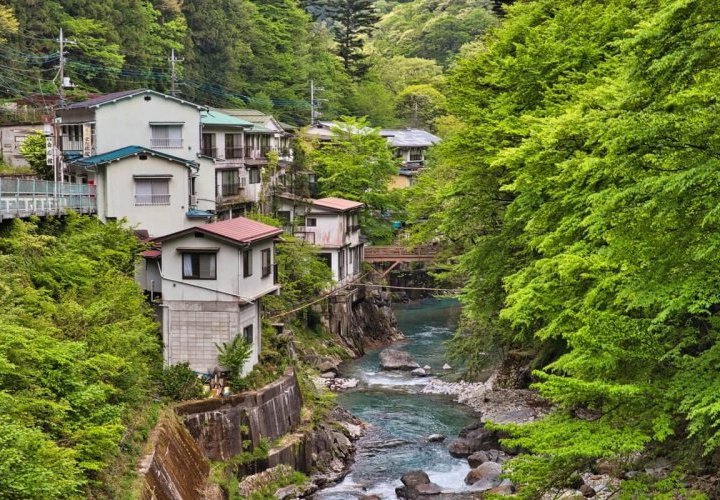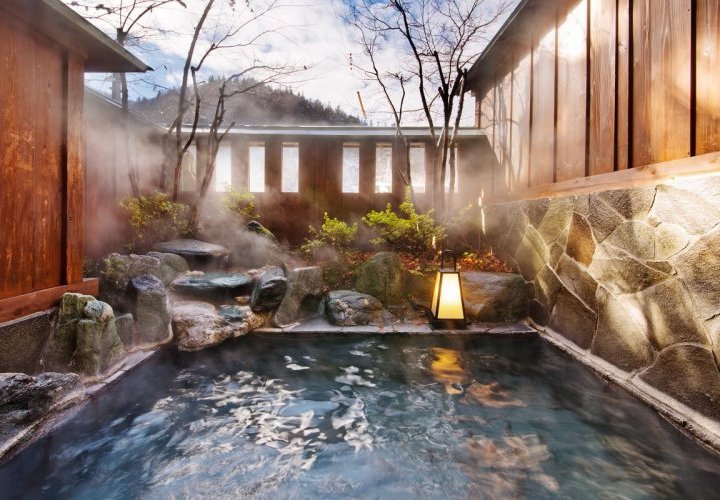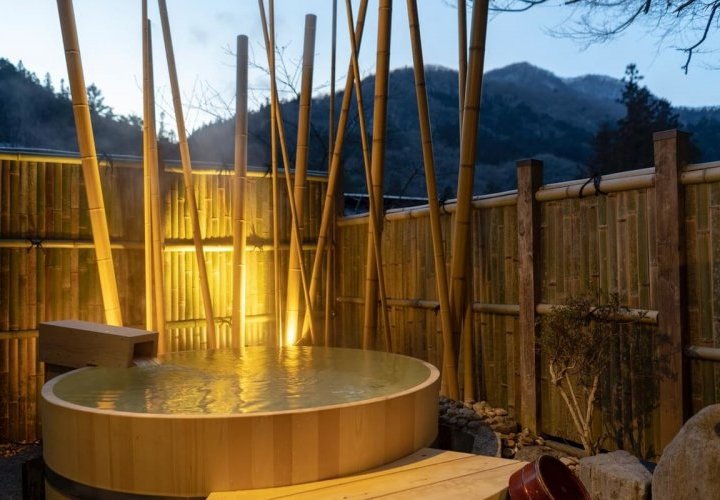In addition to the hot spring experience, more
Manza Onsen is a hot spring resort town located at an altitude of 1,800 metres above sea level, high up on the slopes of Mount Shirane at the northwestern edge of Gunma Prefecture. Its waters obtained from Mount Shirane are among the most sulphuric waters in Japan and offer different health benefits including improving metabolism and blood circulation.
One of the hot springs where you can wear your bathing suit is Yunessun. This hot spring theme park offers you a unique way to experience the hot springs of Hakone. more
The quality of water in the hot springs at Minakami Onsen is different in every bath, but the most notable is the calcium sulphate water that is clear and colourless. It is said to be good for treating bruises, cuts, wounds such as burns, and even breakouts of acne and rashes on the skin.
In recent years, a number of activities have been growing in the region, from rafting and canoeing on the Tone River, to skiing and snowboarding on the slopes of Mount Tanigawa.
Nasu Onsen is the name of a group of hot springs in the highlands below Mount Nasudake in Nasu district of Tochigi Prefecture. It can be accessed in about an hour and a half by train from Tokyo and offers over 10 bathing facilities and nearly 30 inns, making it a wonderful hot spring getaway. The hot spring baths of Nasu were discovered during the Nara period (710-794) and have been highly regarded for their restorative properties ever since. However, it is said that Shika no Yu hot spring first opened in the year 630. The atmospheric Shika no Yu indoor bath has multiple wooden tubs of varying temperatures.
Nikko-Yumoto Onsen is a nice place where you can enjoy hot springs in the bubbling source spring area just a short drive (70 min.) from Nikko Station. The relaxing onsen town has many types of accommodation including riverside hotels, Japanese-style inns, pensions and other various types of lodgings. A lot of them offer access to their baths to non-staying visitors. The hot springs water at Nikko-Yumoto Onsen is loaded with sulphur, giving it a milky-white colour and making bathers’ skin lusciously smooth. This is why the hot springs are also named Bijin-no-Yu or “the hot spring of the beauty”. more
First, try out the Yumoto Onsen, where the entire area has the smell of sulphur. Beside the onsen town, you will see Lake Yunoko, a body of water that was formed from damming due to an eruption of the Mitake volcano to the northeast. A popular tourist spot where the waters of Lake Yunoko fall is Yudaki waterfall with a length of 110 metres and a height of 70 metres. Other hot springs in the area are Chuzenji Onsen at the shores of Lake Chuzenji and Kotoku Onsen.
Ikaho Onsen together with Kusatsu, Minakami and Shima Onsen are the four most famous hot spring resorts of Gunma Prefecture. The first one is also known as the birthplace of onsen manju (steamed bean-jam buns).
Kinugawa Onsen is close to Nikko and is a good place to spend the night after visiting Nikko. It will add fun and relaxation to complement the culture and nature of Nikko. There are many open-air baths and footbaths available, where visitors can enjoy the view of the Kinugawa river and the gorge. Kinugawa Onsen has an alkaline spring water that is colourless and transparent. It is said to relieve tiredness and stress and refresh your tired body, being safe for children and older adults as well. more
In the proximity of the onsen you will see many beautiful sites such as the World Heritage Site Nikko Toshogu Shrine, as well as the popular Nikko Edomura and the Tobu World Square.
Along the freshwater river called Hoki, you can visit eleven hot springs and hot spring inns including Fukuwata Onsen, Shiogama Onsen, Shio no Yu Onsen, Nakashiobara Onsen, etc. that have various mineral qualities, and it’s recommended to try out the different waters. For example, the waters of Fukuwata Onsen, Shiogama Onsen, and Shio no Yu Onsen contain sulphate, which is said to help cure burns, more
The quality of the hot springs is great and it was once said that they are effective against forty thousand types of illnesses, as the name of the onsen implies. It was designated as a national hot spring area for recovery in 1954, along with Sukayu Onsen in Aomori and Nikko Onsen in Tochigi. The hot springs are said to help cure illnesses both by bathing in the water that heals cuts, more

